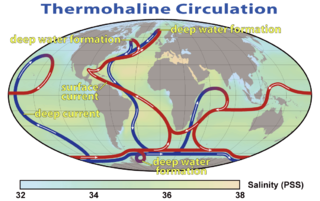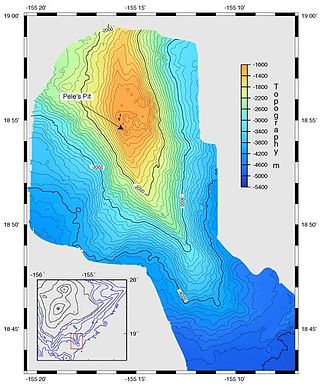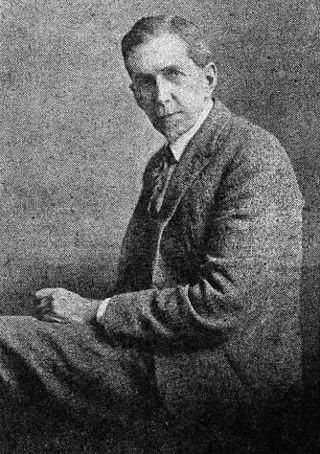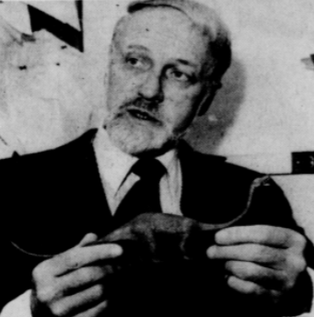Gardner Soule | |
|---|---|
 | |
| Born | December 16, 1913 |
| Died | October 26, 2000 |
| Occupation | Writer |
Gardner Soule (December 16, 1913 - October 26, 2000) was an American writer known for his books on cryptozoology and marine life.
Gardner Soule | |
|---|---|
 | |
| Born | December 16, 1913 |
| Died | October 26, 2000 |
| Occupation | Writer |
Gardner Soule (December 16, 1913 - October 26, 2000) was an American writer known for his books on cryptozoology and marine life.
Soule contributed articles to Boys' Life and Popular Science . Many of his books were aimed for younger readers.
His books on ancient mariners and oceanographic discoveries received positive reviews. [1] [2] However, the factual content of his works on cryptozoology was disputed. Critics described his work on alleged cryptids like the Flathead Lake Monster as entertaining, not scientific. [3] Other reviews were more positive, describing his research on marine creatures such as the giant squid, megamouth shark and sea wasp as informative. [4]
Soule who had spent his early life in Texas authored The Long Trail which described the history of cowboys and cattle trails. Historian Ralph Bieber wrote that the book was "disorganized, full errors, and generally unreliable." [5] Orlan Sawey a President of the Texas Folklore Society wrote that a "major defect of the book is its historical inaccuracy." [6]

Cryptozoology is a pseudoscience and subculture that searches for and studies unknown, legendary, or extinct animals whose present existence is disputed or unsubstantiated, particularly those popular in folklore, such as Bigfoot, the Loch Ness Monster, Yeti, the chupacabra, the Jersey Devil, or the Mokele-mbembe. Cryptozoologists refer to these entities as cryptids, a term coined by the subculture. Because it does not follow the scientific method, cryptozoology is considered a pseudoscience by mainstream science: it is neither a branch of zoology nor of folklore studies. It was originally founded in the 1950s by zoologists Bernard Heuvelmans and Ivan T. Sanderson.

Marine biology is the scientific study of the biology of marine life, organisms in the sea. Given that in biology many phyla, families and genera have some species that live in the sea and others that live on land, marine biology classifies species based on the environment rather than on taxonomy.

Oceanography, also known as oceanology and ocean science, is the scientific study of the oceans. It is an Earth science, which covers a wide range of topics, including ecosystem dynamics; ocean currents, waves, and geophysical fluid dynamics; plate tectonics and the geology of the sea floor; and fluxes of various chemical substances and physical properties within the ocean and across its boundaries. These diverse topics reflect multiple disciplines that oceanographers utilize to glean further knowledge of the world ocean, including astronomy, biology, chemistry, climatology, geography, geology, hydrology, meteorology and physics. Paleoceanography studies the history of the oceans in the geologic past. An oceanographer is a person who studies many matters concerned with oceans, including marine geology, physics, chemistry and biology.
Cadborosaurus, nicknamed Caddy by journalist Archie Wills, is a sea serpent in the folklore of regions of the Pacific Coast of North America. Its name is derived from Cadboro Bay in Greater Victoria, British Columbia, and the Greek root word "saurus" meaning lizard or reptile.

A lake monster is a lake-dwelling entity in folklore. The most famous example is the Loch Ness Monster. Depictions of lake monsters are often similar to those of sea monsters.

A bathymetric chart is a type of isarithmic map that depicts the submerged topography and physiographic features of ocean and sea bottoms. Their primary purpose is to provide detailed depth contours of ocean topography as well as provide the size, shape and distribution of underwater features. Topographic maps display elevation above ground and are complementary to bathymetric charts. Charts use a series of lines and points at equal intervals to showcase depth or elevation. A closed shape with increasingly smaller shapes inside of it can indicate an ocean trench or a seamount, or underwater mountain, depending on whether the depths increase or decrease going inward.
Karl Shuker is a British zoologist, cryptozoologist and author. He lives in the Midlands, England, where he works as a zoological consultant and writer. A columnist in Fortean Times and contributor to various magazines, Shuker is also the editor-in-chief of the Journal of Cryptozoology, which began in November 2012.
Loren Coleman is an American cryptozoologist who has written over 40 books on a number of topics, including the pseudoscience and subculture of cryptozoology.

Sea Monsters, marketed as Chased by Sea Monsters in the United States, is a 2003 three-part nature documentary television miniseries created by Impossible Pictures and produced by the BBC Natural History Unit, the Discovery Channel and ProSieben. Following in the footsteps of The Giant Claw (2002) and Land of Giants (2003), special episodes of the nature documentary series Walking with Dinosaurs, Sea Monsters stars British wildlife presenter Nigel Marven as a "time-travelling zoologist" who travels to seven different periods of time in prehistory, diving in the "seven deadliest seas of all time" and encountering and interacting with the prehistoric creatures who inhabit them. The series is narrated by Karen Hayley.
The Acoustically Navigated Geological Underwater Survey (ANGUS) was a deep-towed still-camera sled operated by the Woods Hole Oceanographic Institute (WHOI) in the early 1970s. It was the first unmanned research vehicle made by WHOI. ANGUS was encased in a large 12-foot (3.7 m) steel frame designed to explore rugged volcanic terrain and able to withstand high impact collisions. It was fitted with three 35 mm color cameras with 400 feet (120 m) of film. Together, its three cameras were able to photograph a strip of the sea floor with a width up to 200 feet (61 m). Each camera was equipped with strobe lights allowing them to photograph the ocean floor from 35 to 50 feet above. On the bottom of the body was a downward-facing sonar system to monitor the sled's height above the ocean floor. It was capable of working in depths up to 20,000 feet (6,100 m) and could therefore reach roughly 98% of the sea floor. ANGUS could remain in the deep ocean for work sessions of 12 to 14 hours at a time, taking up to 16,000 photographs in one session. ANGUS was often used to scout locations of interest to later be explored and sampled by other vehicles such as Argo or Alvin.

Darren William Naish is a British vertebrate palaeontologist, author and science communicator.

Harbor Branch Oceanographic Institute is a non-profit oceanographic institution operated by Florida Atlantic University in Fort Pierce, Florida, United States. Founded in 1971 as non-profit research organization, the institution was transferred to FAU in 2007.

Alpheus Hyatt Verrill, known as Hyatt Verrill, was an American zoologist, explorer, inventor, illustrator and author. He was the son of Addison Emery Verrill, the first professor of zoology at Yale University.

Roy P. Mackal was a University of Chicago biologist best known to the general public for his interest in cryptozoology.

USNS Bowditch (T-AGS-21) was the lead ship of her class of oceanographic survey ships for the United States Navy. Launched as the SS South Bend Victory in 1945, Maritime Commission hull number MCV 694, a type VC2-S-AP3 Victory ship, she was named for Nathaniel Bowditch, the second U.S. Navy vessel named in his honor. The ship was acquired by the Navy in August 1957 and converted to an AGS at Charleston Naval Shipyard. Named Bowditch on 8 August 1957 and placed in service 8 October 1958 for operation by the Military Sea Transportation Service (MSTS).

The term deep sea creature refers to animals that live below the photic zone of the ocean. These creatures must survive in extremely harsh conditions, such as hundreds of bars of pressure, small amounts of oxygen, very little food, no sunlight, and constant, extreme cold. Most creatures have to depend on food floating down from above.

Global Explorer ROV is a unique deep water remotely operated vehicle that has made numerous dives below 9,000 feet (2,700 m) on science and survey expeditions for National Geographic, the National Oceanographic and Atmospheric Administration (NOAA) and other research organizations. It was designed and built by Chris Nicholson of Deep Sea Systems International, Inc. of Falmouth, Massachusetts.

The Search for the Giant Squid is a non-fiction book by Richard Ellis on the biology, history and mythology of the giant squid of the genus Architeuthis. It was well received upon its release in 1998. Though soon rendered outdated by important developments in giant squid research, it is still considered an important reference on the subject.